10 Months with Solar Panels: Minimal Energy Consumption and a Greener Tomorrow
10-month solar panel journey: Minimized energy consumption, reduced carbon footprint. No batteries, but eco-friendly habits & remote work at Cycloid.io align with sustainability goals. Potential break-even in 4-5 years, positive impact on the planet & finances

Greetings, fellow eco-enthusiasts! Today, I am thrilled to share my experience with the solar panels I installed in my home about ten months ago. The goal was not to achieve complete self-sufficiency but rather to reduce my electricity consumption during the day and make a positive impact on the environment. So, if you're curious about my journey toward a greener and more energy-efficient lifestyle, keep on reading!
The Decision to Go Solar
Like many environmentally-conscious individuals, I've always been intrigued by the idea of harnessing renewable energy sources. After extensive research and consultation with solar addicts on forums, I decided to take the plunge and install solar panels on my shelter roof.
My primary aim was not to cut ties with the grid entirely, but rather to reduce my carbon footprint and minimize my daytime energy consumption.
Solar Panels: An Overview
I opted for a photovoltaic solar panels, which are designed to efficiently convert sunlight into electricity. These panels work silently, without emitting any harmful greenhouse gases (ok, I know, there is still a carbon footprint considering rare materials, transport, production, etc), making them a perfect fit for my eco-friendly goals.
When I decided to embrace solar energy, I wanted a setup that not only offered optimal performance but also seamlessly blended into the surroundings. After thorough research, I stumbled upon https://allo.solar, a platform that offered an impressive range of solar kits. Among them, I found the perfect fit for my needs - a kit composed of 2x 400Wc solar panels, a DS3L-APSystem micro-inverter, and all the necessary cables.
The main reason I chose to install the solar panels on my shelter's roof was to maintain the aesthetics of my home. I didn't want any bulky installations marring the appearance of my house. Thankfully, my shelter, tucked away at the back of my garden, provided an ideal location. Its roof remained unseen from my home, ensuring that the solar setup would be discreet and inconspicuous.
Another advantage of placing the solar panels on the shelter roof was its excellent sun exposure. With a full south orientation, the panels received ample sunlight from 10:00 AM to 6:00 PM daily. During these hours, the solar panels efficiently harnessed the sun's energy, reducing my reliance on traditional grid power significantly.
However, I encountered a minor setback when it came to the roof's inclination. At 13°, it proved to be perfect for capturing sunlight during the summer months, but not as optimized for the winter season when the sun hovers lower in the sky. Ideally, a 25° inclination is recommended for more consistent energy generation throughout the year. Nonetheless, the solar panels still performed admirably during winter (considering the weather and their capacity), albeit with a slight dip in efficiency.
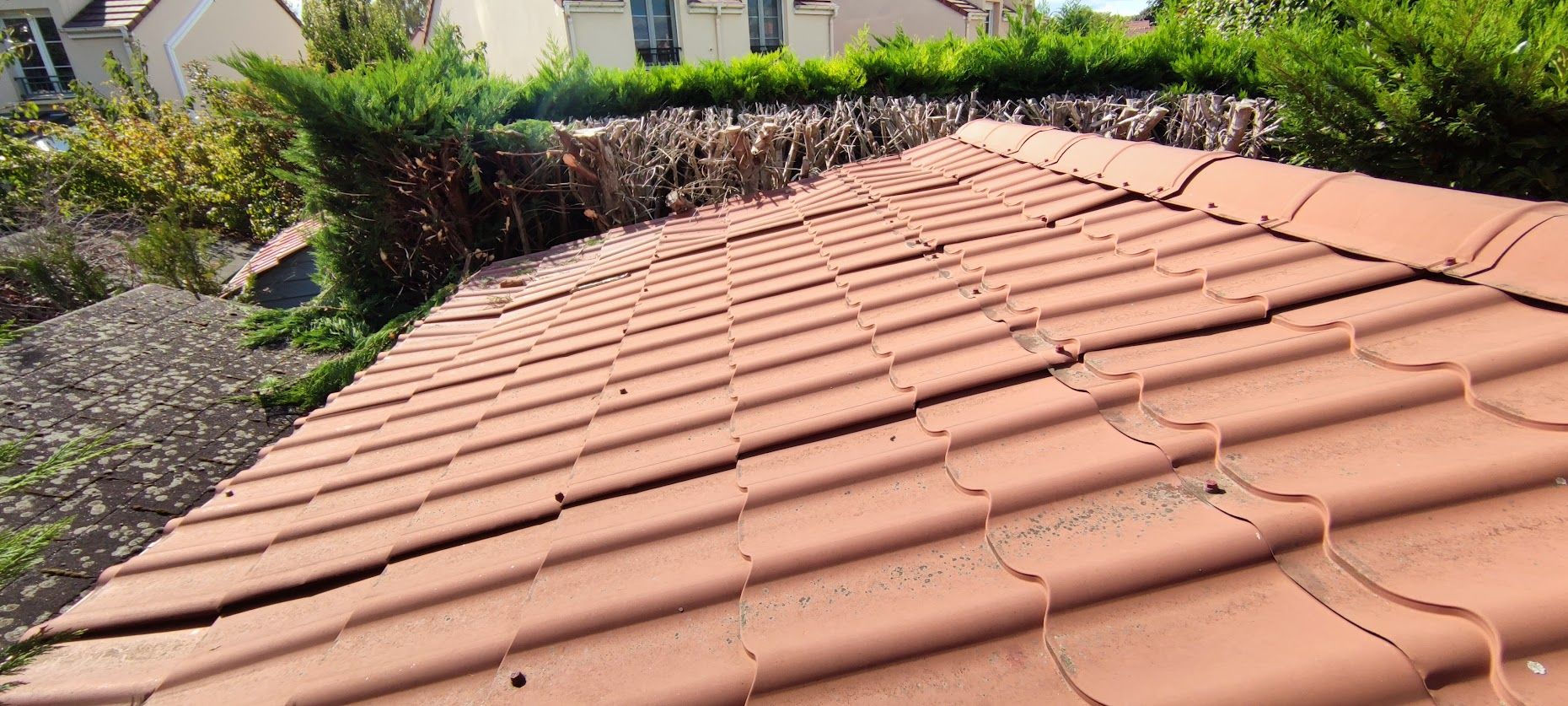
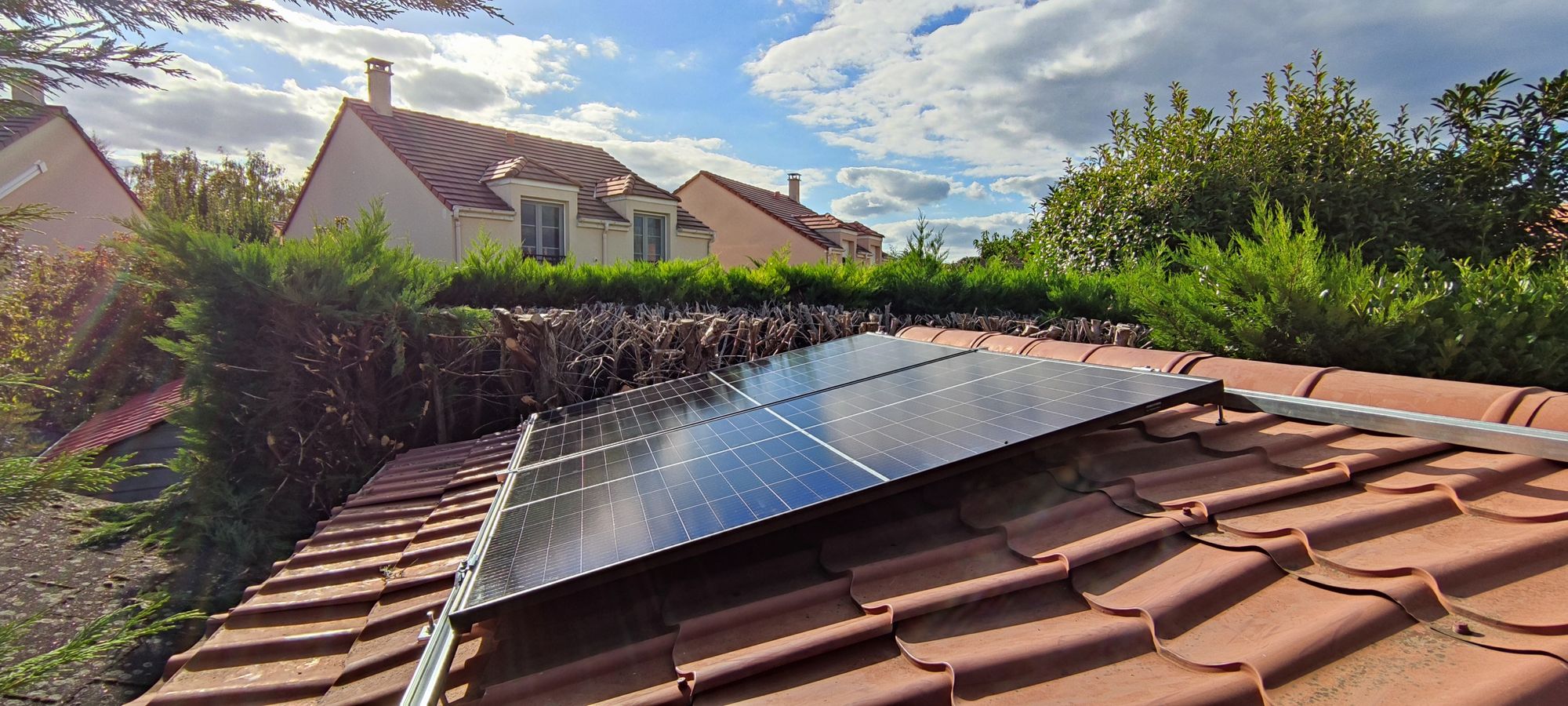
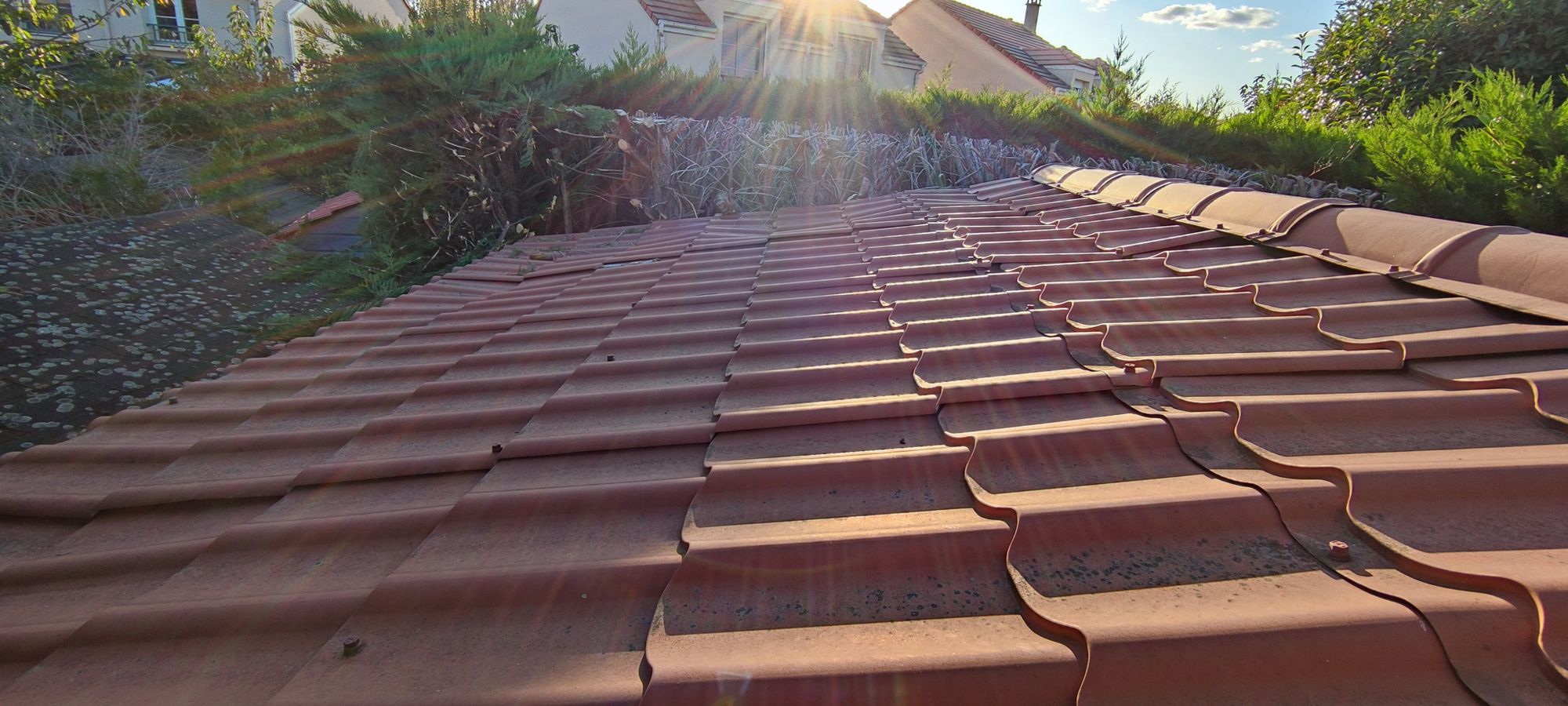
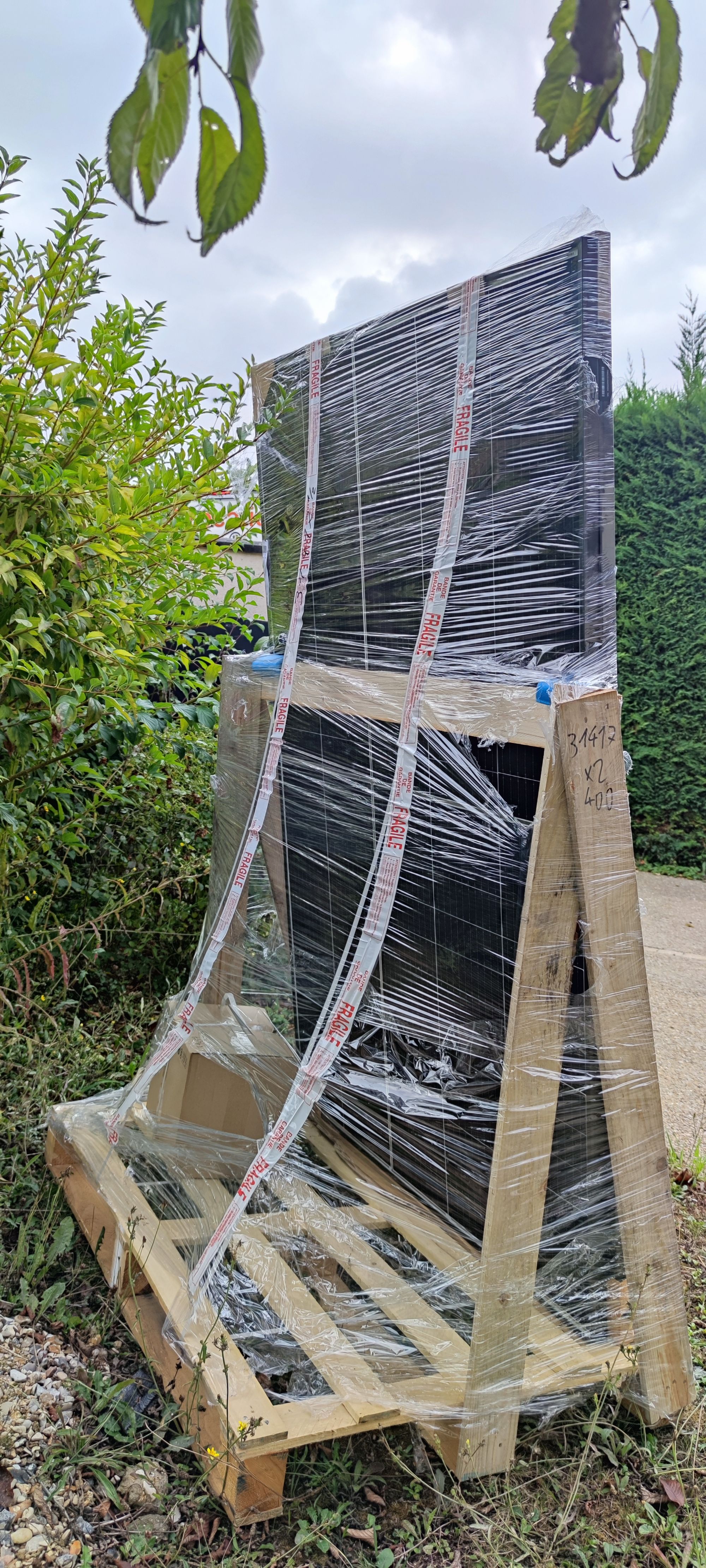
The issue with the shelter is that the roof is really light, and I wasn't confident it will support my weight. Fortunately, my father helped me to install the solar panels, and is lighter than me :-P
We still had to reinforce the structure of the roof to ensure it was solid enough to support the weight of a human + the weight of the solar panel installation.
I had already brought electricity in the shelter, so it was easy to plug the solar energy. On the photo, it's a temporary cable to measure through the Shelly outlet the amount of electricity generated.
(To be transparent, temporary is still here 10 months later ... ^^! I plan to build a ESP32 ship that will read through Zigbee the metering of the inverter, and send it through MQTT broker, but that's another blog post for the future)
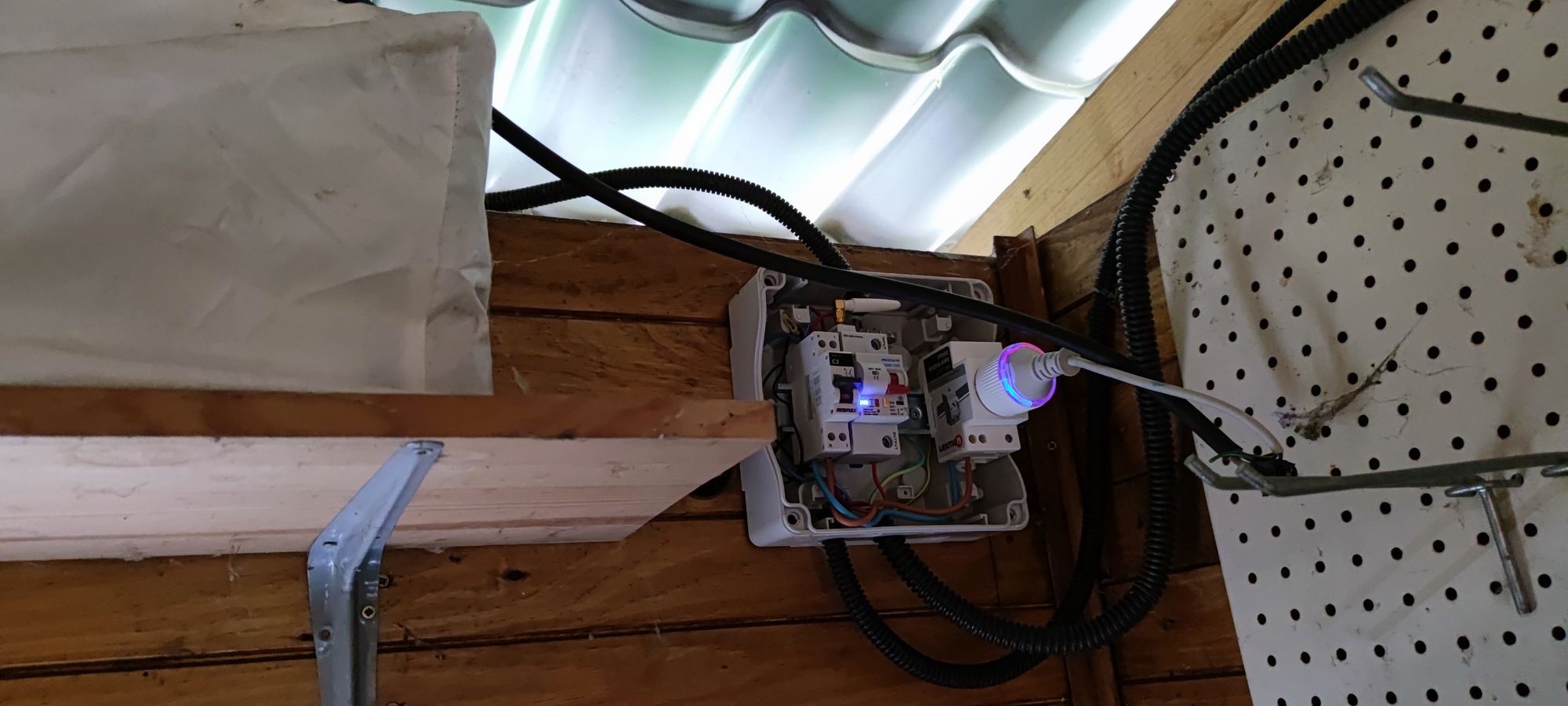
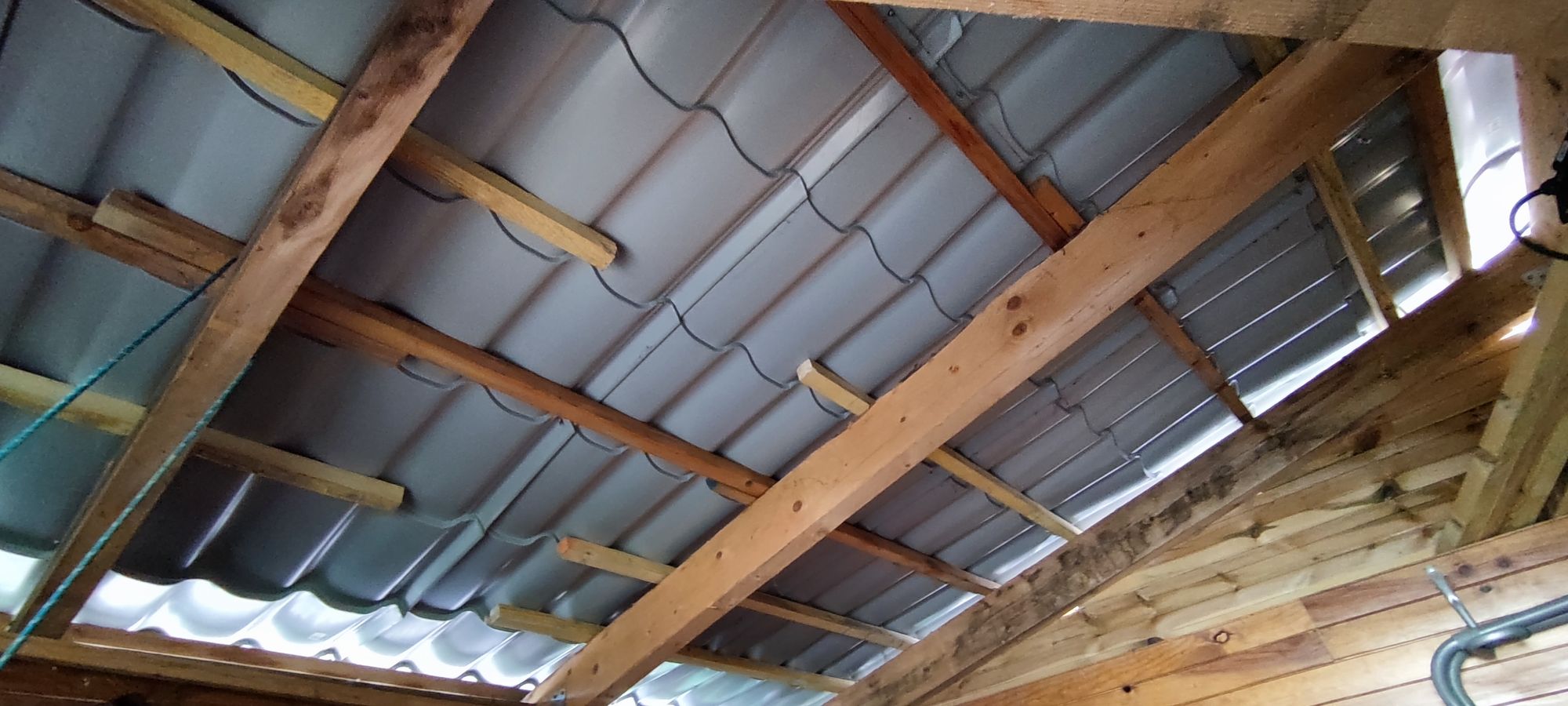
Minimal Consumption During the Day
From the moment the solar panels were installed and connected to the grid, I noticed a significant difference in my daily energy consumption. Throughout the day, when the sun is at its peak, the solar panels efficiently generate electricity, powering my home's electrical appliances. As a result, my reliance on the traditional grid power during daylight hours reduced drastically.

As you can observe on my Home Assistant (home automation) Energy Dashboard, I was almost in self autonomy during few hours in the day. It always vary a bit depending my consumption at home. Usually, I'm around 0,5/0,6 kwh at home when I'm alone, working.
When kids are here, because of the TV + some other equipments, it's going on 0,8 kwh to 1 kwh.
Thanks to nuclear plants (I'm not arguing that's the best solution, but they "at least" provide low carbon energy in a constant way), we can see that for my house + car, we used 97% low carbon energy.
The other 3% is based on Electricity european market + some gas energy produced in France, etc.
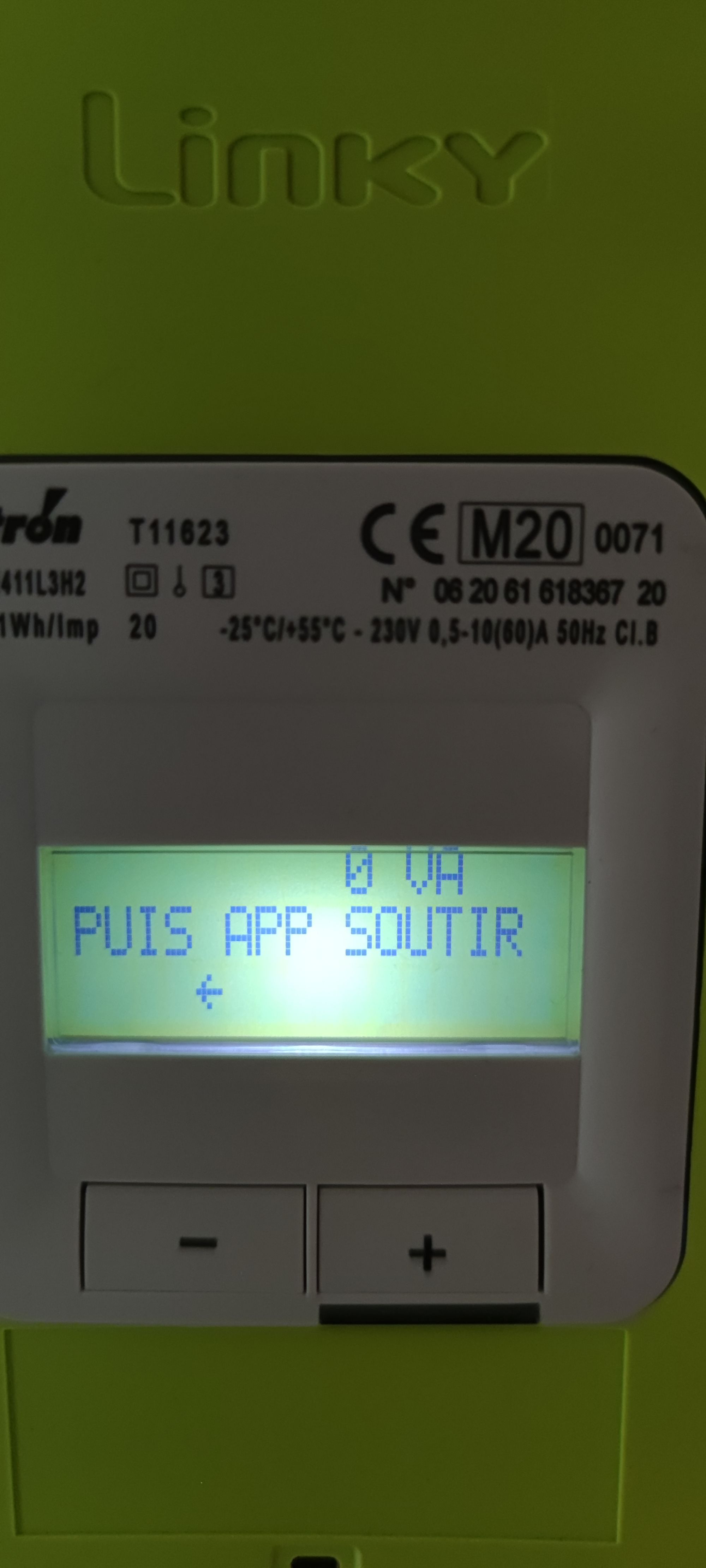
No Battery Storage: How I Managed
Unlike some solar setups that include battery storage to store excess energy for nighttime use, I chose not to invest in batteries initially. While batteries have their advantages, such as providing power during grid outages, they can be expensive and have a limited lifespan. And they also pollute.
Instead, I focused on making some lifestyle changes to align with my solar panel system:
- Daytime Energy Usage: I consciously shifted energy-intensive tasks, like running the dishwasher or doing laundry, to daytime hours to capitalize on solar energy. I have plan to go further by automating it with Home Assistant, but also taking into considerating carbon footprint. If we're out of energy and buying carbonated energy from another country, then I can maybe postpone it ...
- Energy-Aware Habits: I became more vigilant about turning off lights and appliances when not in use, optimizing my energy consumption further. But that were already automated thanks to Home Assistant
- Time-of-Use Awareness: Some utility companies offer time-of-use plans, which charge higher rates during peak hours and lower rates during off-peak hours. Now that I have solar panels covering the day, I plan to switch on such energy plan to charge my vehicle during the night at lower costs.
Environmental Impact
Ever since I installed the solar panels, my carbon footprint has seen a remarkable reduction. The clean energy generated by these panels has effectively thwarted a substantial amount of greenhouse gas emissions that would have otherwise resulted from relying on fossil fuels to power my home. Furthermore, even though France might not heavily depend on carbonated energy sources, the addition of solar panels has led to a surplus of energy that I no longer consume. This surplus can be exported and sold to other countries that rely more on carbon-intensive energy, making it a significant win for the planet as we collectively reduce overall carbon emissions.
Financial Savings
One of the most pleasant surprises of this solar journey has been the financial aspect. While the initial investment in solar panels may seem significant, I've noticed a steady decline in my electricity bills. Over time, these savings will help offset the initial cost of the installation.
Since October of last year, I have generated an impressive 600 KWh of electricity. Considering the current French price of 0.2092 per KWh (which is likely to rise in the future), this equates to approximately 125€ worth of electricity produced already. Given that the initial cost of the solar kit was 690€, and with two more sunny months ahead in August and September, I estimate reaching an annual total of around 150€ in electricity production.
By reaching this milestone, I can foresee breaking even on my investment in approximately 4 to 5 years. It's truly gratifying to witness not only the positive impact on the environment but also the financial benefits of utilizing solar energy for my home.
Maintenance and Durability
Maintaining the solar panels has been relatively hassle-free. Regular cleaning and occasional inspections ensure optimal performance. Additionally, these solar panels come with a robust warranty, providing me peace of mind for years to come.
Conclusion
In conclusion, my experience with solar panels over the past ten months has been incredibly rewarding. While my primary goal was not to achieve complete self-sufficiency, I successfully reduced my daytime energy consumption and embraced a more environmentally-conscious lifestyle. Moreover, my remote work at Cycloid has been a significant factor in this journey towards sustainability.
As I continue to improve my home consumption through solar energy, I'm not only benefiting personally but also contributing to the reduction of our company's environmental impact. Cycloid's commitment to remote work and sustainability, and my dedication to renewable energy align harmoniously, making a collective positive impact on the planet. Knowing that I play a role in mitigating our ecological footprint brings a sense of fulfillment and motivates me to continue advocating for sustainable practices both at home and in the workplace.
If you're considering making the switch to solar energy, I encourage you to explore the possibilities. Whether your goal is to reduce your carbon footprint, cut down on electricity costs, or make a positive impact on the environment like me, solar panels can undoubtedly be a powerful step towards a greener and more sustainable future for all.
Remember, even small steps towards renewable energy can collectively create a massive positive impact on our planet. Let's join hands and move towards a cleaner, brighter, and more sustainable tomorrow with solar energy!